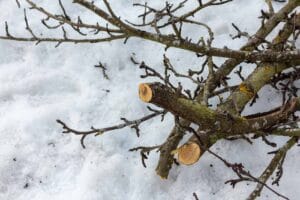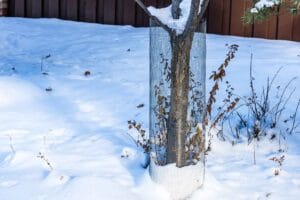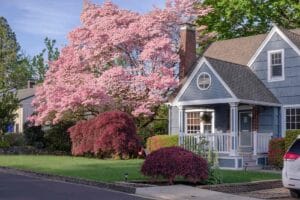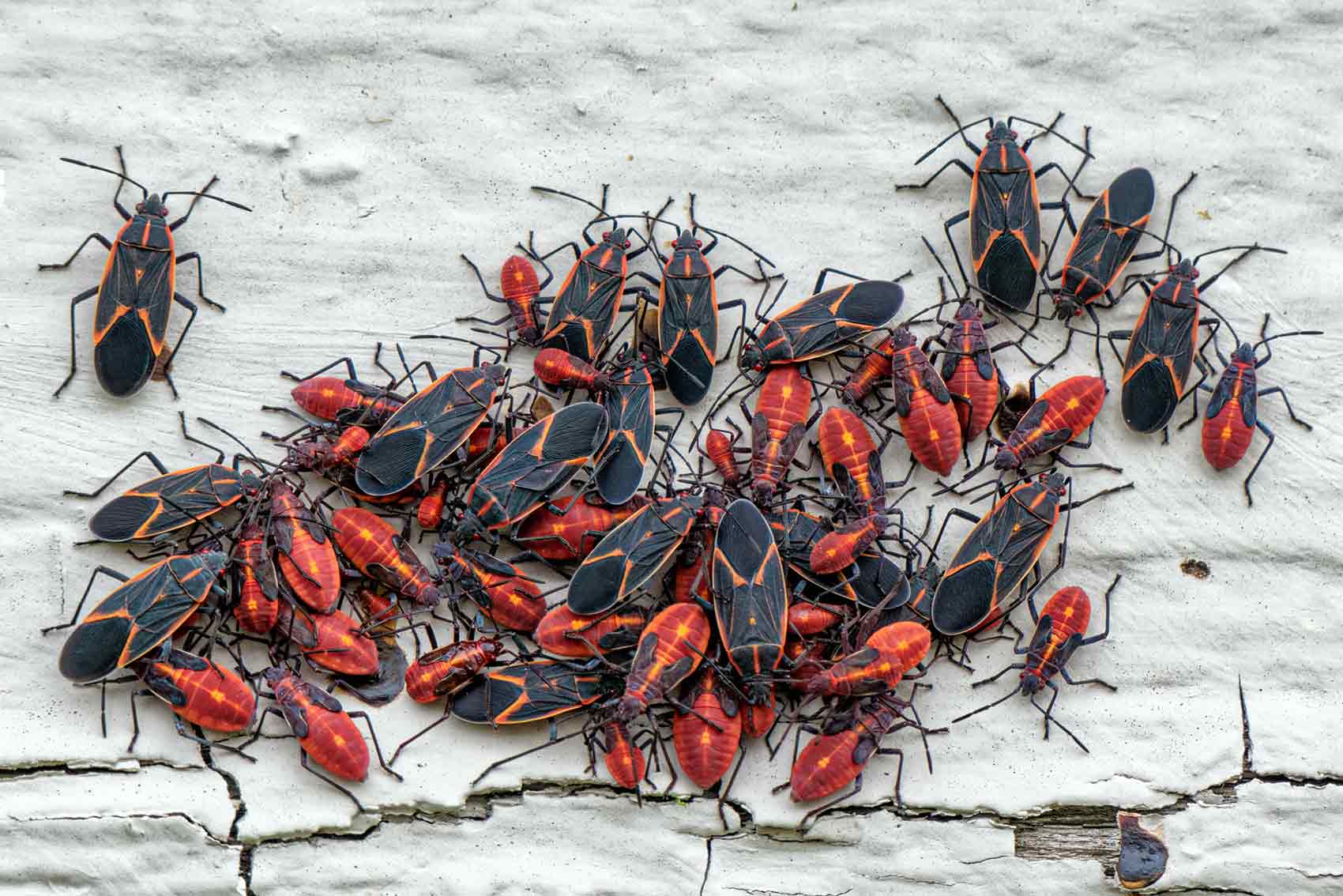
Maple trees symbolize the beauty of our urban and forest landscapes; they bring vibrant colors in the fall, support biodiversity, and provide shade in our backyards. However, like all deciduous trees, they can fall victim to a variety of pests. Gaining a better understanding of the maple–insect relationship and learning to spot early signs of infestation is essential to protect these iconic trees.
Why Do Maples Attract So Many Insects?
Maples include nearly 200 species and cultivars, offering a wide range of foliage, bark textures, and sugar content in their sap. Each variety creates a unique microhabitat for a number of insects:
- Tender leaves: Rich in nutrients, they attract aphids and caterpillars.
- Thin bark: An ideal refuge for earwigs, carpenter ants, scale insects, and more.
- Sweet sap: Irresistible to wasps, bees, and wood-boring insects.
Knowing the main insects that attack trees helps you act quickly before the damage becomes irreversible.
The Most Common Maple Tree Pests
1. Asian Longhorned Beetle (Anoplophora glabripennis)
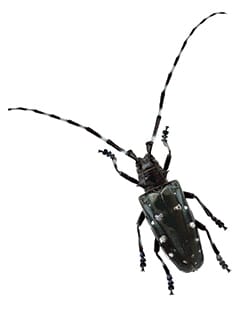 This wood-boring insect is one of the maple tree’s worst enemies. These black beetles with white spots are xylophagous, meaning they feed on wood. As adults, they measure between 20 and 35 mm. The larvae dig large tunnels, disrupting the tree’s sap flow. You may notice round holes (6 to 12 mm wide) and piles of sawdust at the base of infested trees. Any sighting of the Asian longhorned beetle or a potentially infected tree should be reported to authorities by calling 1-800-442-2342. If you have a tree cut down due to an infestation, it is important not to move the wood.
This wood-boring insect is one of the maple tree’s worst enemies. These black beetles with white spots are xylophagous, meaning they feed on wood. As adults, they measure between 20 and 35 mm. The larvae dig large tunnels, disrupting the tree’s sap flow. You may notice round holes (6 to 12 mm wide) and piles of sawdust at the base of infested trees. Any sighting of the Asian longhorned beetle or a potentially infected tree should be reported to authorities by calling 1-800-442-2342. If you have a tree cut down due to an infestation, it is important not to move the wood.
2. Apple comma scale (Lepidosaphes ulmi)
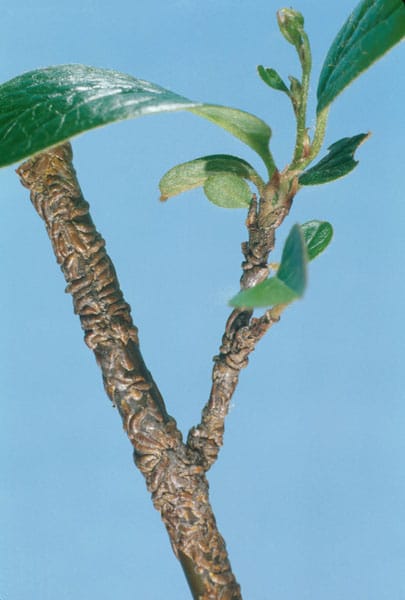 Resembling small grayish commas stuck to the bark, these scales suck the sap from plants. Although they often attack apple trees, hence their nickname, this insect is also commonly found on maples, ashes, and lindens. The presence of these scales causes leaves to yellow, wood to weaken, and opportunistic fungi to settle in.
Resembling small grayish commas stuck to the bark, these scales suck the sap from plants. Although they often attack apple trees, hence their nickname, this insect is also commonly found on maples, ashes, and lindens. The presence of these scales causes leaves to yellow, wood to weaken, and opportunistic fungi to settle in.
3. Maple aphid (Periphyllus testudinaceus)
Aphid colonies multiply in the spring, and the symptoms are easily recognizable with curled leaves, small groups of black insects under the leaves, and sticky honeydew deposits. They are rarely very damaging, and ladybugs are excellent natural predators.
4. Oblique-banded leafroller (Choristoneura rosaceana)
Leafrollers are a family of insects that include several species which can attack maples. Their caterpillars nibble on the buds, leaving silk threads and perforated leaves. Growth losses are common in sugar maples used for maple syrup production.
5. Bark beetles and weevils
Bark beetles are beetles from the weevil family. Many lay their eggs under the bark of maples, and their chevron-shaped tunnels disrupt sap flow and often introduce pathogenic fungi. A healthy maple can usually defend itself naturally against these insects, notably by trapping and drowning the insects in sap as they try to enter the outer part of its trunk. However, damage can be significant if the insects infest injured or dehydrated trees.
6. Negondo maple bug / Elder box (Boisea trivittata)
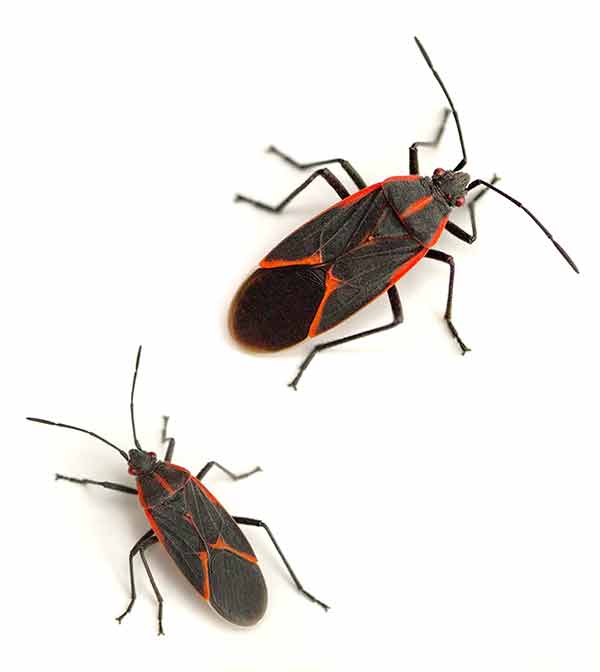 This bug is becoming increasingly common in Quebec, especially in the fall. Although it generally does not cause significant damage to the tree, it can become very invasive around homes, especially if a Negondo maple (also called “Box elder maple”) is nearby.
This bug is becoming increasingly common in Quebec, especially in the fall. Although it generally does not cause significant damage to the tree, it can become very invasive around homes, especially if a Negondo maple (also called “Box elder maple”) is nearby.
The adults are black with clearly visible red stripes. They gather in large numbers on sunlit walls or try to enter homes in the fall to spend the winter.
- These insects do not bite and do not feed on wood, but their presence can be bothersome.
- They lay their eggs in the seeds and young leaves of the box elder maple, without causing serious harm to the tree.
- A vacuum cleaner or effective sealing of openings is often enough to limit their intrusion into the home.
How to Spot the Early Signs of an Infestation?
| Visual Indicator | Possible Insect | Recommended Action |
| Round holes + sawdust | Asian longhorned beetle | Contact a certified arborist |
| Sticky leaves, black soot | Aphids | Encourage natural predators |
| Wilting of an entire branch | Emerald ash borer/weevil | Structural evaluation |
| Rough bark with comma shapes | Scale insect | Horticultural oil treatment |
| Large numbers of red and black insects | Maple bug | Vacuum them up. Seal cracks to prevent them from entering the house during winter. |
Watch your maples closely: premature color changes, defoliation, sap leaks, or visible tunnels under the bark are all warning signs.
Preventive Measures to Protect Your Trees from Insects
- Choose Resistant Cultivars
Certain varieties (such as Norway maple ‘Crimson King’ and silver maple) show better tolerance to some pests. - Avoid Stress
A maple weakened by drought releases volatile compounds that attract more boring insects and bark beetles, reducing its ability to defend itself. - Sanitary Pruning
Remove dead or infected branches and dispose of them according to municipal regulations. Preventive pruning also promotes better tree growth and optimal health. - Benefit from Biodiversity
Plant flowering shrubs to attract ladybugs, hoverflies, and parasitic wasps—natural enemies of harmful tree insects. - Continuous Monitoring
Inspect your trees for insects and symptoms at least twice a year: in spring and after leaf fall in autumn.
Treatment Options in Case of Infestation
| Level of Infestation | Recommended Methods |
| Light (spotted leaves, few aphids) | High-pressure water spray, insecticidal soap |
| Moderate (yellowing branches, visible colonies) | Horticultural oils, biopesticides (Bacillus thuringiensis) |
| Severe (tunnels, dieback) | Targeted pruning, systemic injected treatments, removal if risk of spread |
Systemic injections using new-generation insecticides are preferably done in late spring, when the sap is rising. They require a certified applicator and an accurate diagnosis to avoid harming pollinators.
Impacts on the Ecosystem and Ethical Considerations
Eliminating all insects is neither possible nor desirable. Maples shelter an essential microfauna: caterpillars for birds, aphids for ladybugs, and more. The goal is to maintain balance:
- Intervene only when nuisance thresholds are exceeded.
- Prioritize biological control over chemical control.
- Respect flowering periods to protect bees and bumblebees.
Frequently Asked Questions About Insects and Maples
Is my maple oozing sap—is it a sign of insects or disease?
Not necessarily; it could be due to frost cracks or recent pruning. However, if the sap flow is accompanied by sawdust or holes, suspect a boring insect.
Can I apply a home treatment?
Black soap solutions can help limit aphid colonies. For borers, it’s best to call a certified arborist, as improper treatment can make things worse.
Are urban maples more vulnerable?
Yes, soil compaction, pollution, and urban heat stress the tree, promoting the spread of opportunistic maple insects.
Émondage SBP: Your Ally for Healthy Maples
Maples are a source of pride in Quebec, but they remain vulnerable to a variety of tree insects. Regular vigilance, promoting biodiversity, and prompt intervention are key to preserving their health and longevity.
For over 20 years, Émondage SBP has been dedicated to the vitality of residential and municipal trees. Our certified arborists offer inspection services, preventive pruning, insect treatments, and even safe tree removal when necessary. Contact us for a professional diagnosis and protect your maples… before the insects do!
Source:
- Government of Canada. Asian longhorned beetle: An unwanted invasive species. 2019.
- Government of Canada – Natural Resources Canada. Oystershell scale. 2010.
- Réseau Pommier. Les tordeuses occasionnelles du fruit. [Occasional Fruit Leafrollers]. 2023.
- Wikipédia. Scolytinae.
- Government of Canada – Natural Resources Canada. Redcrossed stink bug. 2011.

